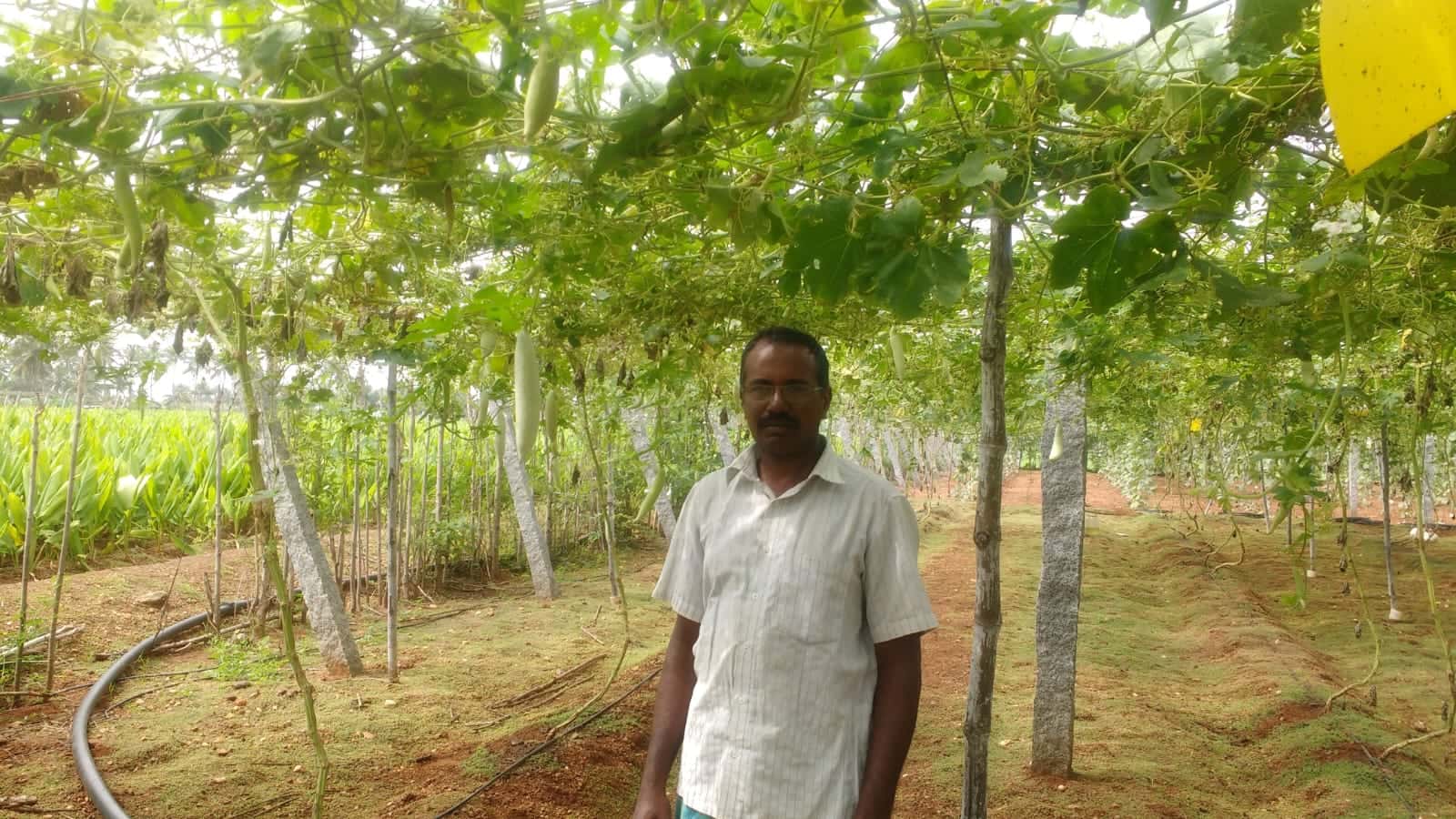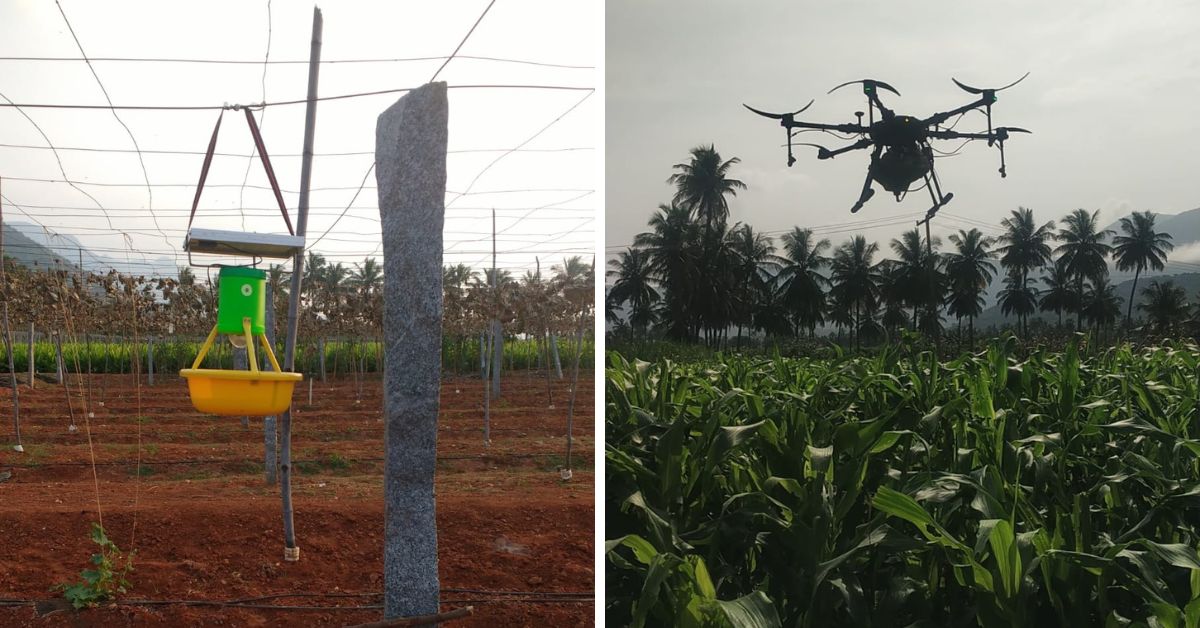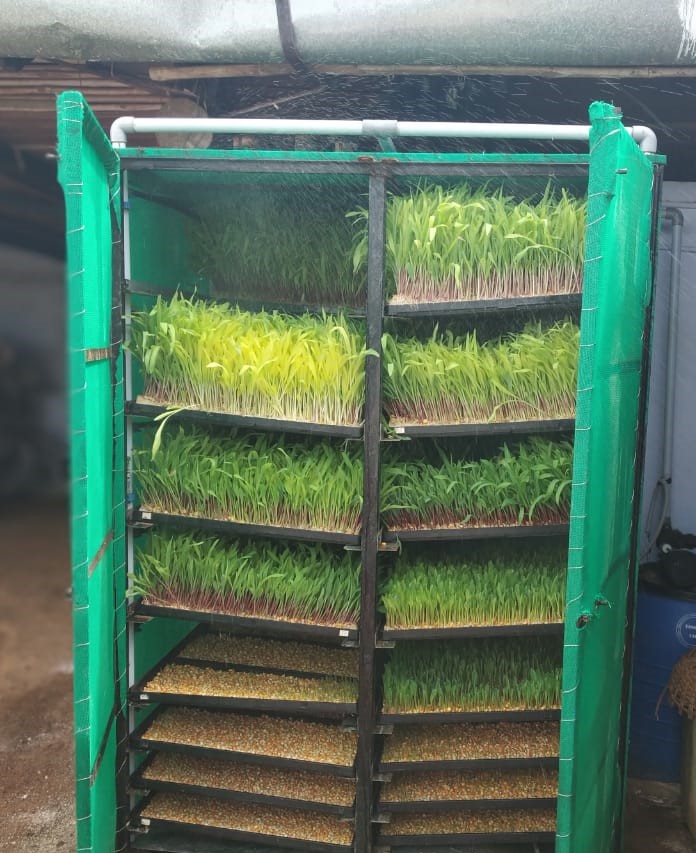
[ad_1]
In 2008, P Saravanan’s turmeric crop was destroyed as a result of illness. This was the proverbial get up name for the 58-year-old farmer, which prompted his change to natural farming.
Born right into a farming household, Saravanan realised that each one he needed to do to guarantee a very good crop — which benefitted him in addition to the shoppers — was to return to his grandparents’ model of farming and abandon chemical compounds and pesticides.
The Namakkal resident quickly realised the advantages of natural farming, and thru completely different coaching on the native Krishi Vigyan Kendra (KVK), alongside together with his improvements and residential recipes to maintain pests at bay, Saravanan quickly grew to become a licensed natural farmer with many awards up his sleeve.
In spite of everything, he has been practising built-in farming for a number of many years now.
Initiated with avoiding chemical compounds fully, he quickly moved in the direction of drip irrigation, vermicompost, a biogas unit and hydroponics. Unable to domesticate sufficient fodder for his cattle, hydroponic maize manufacturing proved to be a gamechanger for him.
Since 2018, he has been utilizing this technique to develop fodder for his livestock. What’s distinctive about it’s the truth that he grows it in his cabinet! He makes use of the soilless hydroponic technique to develop maize fodder.
Then in 2018, he obtained the Haldhar Natural farmer award from the Indian Council of Agricultural Analysis together with the ‘Progressive farmer award’ from the Central authorities, amongst others.
So how did a farmer practising conventional farming in a village in Tamil Nadu transfer to natural strategies and discover success in them? Right here’s his story.
An try to save lots of soil

P Saravanan has been farming for over 40 years now in Ariyagoundampatti village, Namakkal, Tamil Nadu. Whereas his grandparents practised natural strategies of farming, his father launched chemical compounds and pesticides, which Saravanan continued until 2006 as nicely.
The federal government launched the micro-irrigation scheme in 2005-06, beneath which subsidies have been offered for drip and sprinkler irrigation. Saravanan, an early adopter of many such new
schemes, determined to provide drip irrigation a attempt.
“We used to face water shortage, which made irrigation very tough. Drip irrigation saves water and irrigates thrice the quantity of land utilizing the identical water utilized by conventional strategies,” Saravanan tells The Higher India.
Since 2007, the farmer has moved to drip irrigation on his 6 acre and 36 cents (1 acre is 100 cents) land on which he cultivates turmeric, groundnuts, and greens. He additionally practises built-in farming, a sustainable agricultural system the place crops, livestock, aquaculture, poultry are managed collectively.
Together with these crops, he additionally manages livestock, together with cows, goats, geese and birds.
Shortly after he began drip irrigation, he received his soil examined. The take a look at indicated that the soil was not wholesome, and had rising pH ranges and was getting spoilt. This was the identical time when his turmeric crop was affected by ailments.

“Folks on the KVK advised some biofertilisers to salvage the turmeric crop, and it labored. Additionally they advised that the one method to protect the soil and forestall additional injury was by transferring to natural farming,” explains the 58-year-old.
Beginning in 2008 in a bid to save lots of his land, soil and crops, he slowly stopped utilizing chemical fertilisers and pesticides. He additionally began practising crop rotation to make sure soil well being.
“After I plant pulses, I be certain that I alter the crop for the subsequent yr. I additionally planted nerium as a border crop to soak up pollution and develop agathi & maize across the discipline as a barrier crop to stop the entry of pests,” he says.
He additionally constructed a vermicompost manufacturing unit in 2008 which produces over 6 tonnes per yr. He makes use of this vermicompost, neem desserts and castor desserts as fertilisers. He additionally has a biogas plant that converts the waste into power and purifies the air.
Moreover these, he utilises panchakavya (an answer made from cow’s milk, curd, ghee, cow dung and urine used as a fertiliser) spray along with a home made spray containing ginger, garlic & chillies for controlling pests and illness.
Whereas all the things was going nicely, Saravanan discovered it powerful to develop fodder for his cattle. Shopping for it from outdoors was costly.
However then, in 2011, KVK Namakkal carried out an illustration of soilless hydroponic farming for maize.
Rising maize in a cabinet

“The fodder demand was growing and I used to be unable to maintain up. The present land was simply not enough to develop fodder. Whereas I noticed the demo in 2011, it was only some years later that I received entry to the package,” explains Saravanan,
In 2018, Aavin the dairy co-operative in Namakkal, gave a hydroponics unit to Saravanan. Hydroponics is a method of rising vegetation with out soil and little or no water. It makes use of a water-based answer and produces fodder, cereals and pulses on a small scale degree.
Saravanan explains that by planting 500 gm of maize, he will get 4.5-5 kg of maize fodder in a matter of 8 days.
“I maintain the trays in my cabinet as we’ve got to maintain them away from daylight. Because it grows in 8 days, I get a enough yield in a month. I’ve been pushing different farmers too to attempt hydroponics,” he provides.
The unit prices about Rs 20,000.
Saravanan explains the steps to develop maize fodder utilizing a hydroponics unit:
- Wash and soak the grains for twenty-four hours.
- Tie the seeds in a gunny bag and maintain it in water for twenty-four hours.
- Switch the sprouted seeds to a tray and unfold it out. Hold it within the cabinet.
- Water it as soon as each three hours, both manually or utilizing a sprinkler with a timer for 7 days.
- The yield might be prepared on the eighth day.
Edited by Padmashree Pande. Image credit: P Saravanan.
[ad_2]